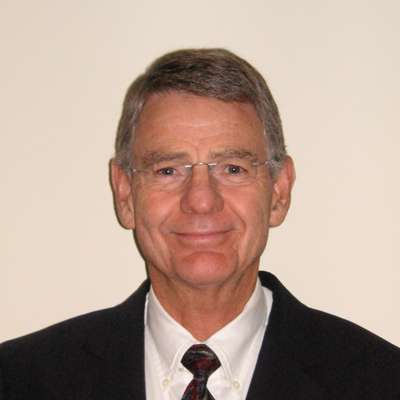Stressing preventive measures so that treatment techniques do not have to be realized
Advances in modern medicine have seen tremendous strides in the diagnosis and treatment of a number of major diseases afflicting humankind. Trailing behind though are similar advances in preventive medicine, which could alleviate some of the treatment costs for major diseases. Dr. Michael Criqui, University of California, San Diego's Chief of the Division of Preventative Medicine, is focused on research in preventive medicine because in the long run, prevention of a clinical event completely avoids the associated morbidity and mortality, and is much more cost-effective than treating disease. His research is identifying the individuals at the highest risk of future cardiovascular disease with much greater precision than traditional techniques, and thus is enabling early preventive strategies to avoid the development of future cardiovascular disease. In many cases, people at high risk for serious cardiovascular events are unaware, because the major risk factors are typically not associated with pain or discomfort. An individual can therefore be at an extreme risk of heart attack and have little to no idea of the impending crisis. Dr. Criqui's techniques will sort out individuals that are at high risk, but feel fine, from normal healthy people, and tailor treatments to meet the needs of the severity of their condition. For example, anti-platelet drugs are often not prescribed to individuals for cardiovascular disease prevention, but in persons at high risk, it is a good measure as the risk of a cardiac event outweighs the threat of bleeding. Using these techniques, Dr. Criqui can identify people at great need of aggressive preventive techniques.
Dr. Criqui is focusing the majority of his current research on the prevention of cardiovascular disease. In particular, he is interested in identifying persons at the highest risk of developing future cardiovascular disease, including coronary heart disease, stroke, and peripheral artery disease. Cardiovascular disease is a major public health issue in the developed world, claiming more lives in the United States than even cancer. In order to do this, he has been investigating early markers of atherosclerotic cardiovascular disease in persons without symptoms, including high levels of coronary artery calcium identified on CT scans and reduced blood flow in the legs. There are a number of techniques that have worked well in detecting early cardiovascular disease or hardening of the arteries -- identification of inflammatory risk factors, ultrasound measures, MRI, and CT scans, -- but their application to risk prediction is relatively new and are a focus of Dr. Criqui's research.
Current research projects involve the refining of existing measures, as well as the introduction of new methods, for looking at characteristics of artery blockage in the heart, abdomen, and legs:
-
Coronary artery calcium is the single most powerful risk factor for predicting future heart attacks and stroke. Higher amounts greatly increase one's risk of a serious cardiovascular event. Dr. Criqui is studying this in patients and comparing measurements to the Agatston score, a standardized rating scale for scoring plaque levels. Whereas the traditional measure up weights the score if the calcium detected is dense, Dr. Criqui has found in exploratory analysis that this is backwards; denser plaque is actually less likely to produce a heart attack at any given volume. It is expected that coronary calcium is a good predictor of cardiovascular disease, and Dr. Criqui is asking important questions about risks of heart disease, including: How many, and which (of the four arteries in the standard artery tree), arteries are involved as risk factors for cardiovascular disease? Is one artery more important than another? and Does the distribution of plaque along the artery (beginning vs. end) affect the risk? These are all major questions that to date, have no concrete answers. Historically, measurements of coronary artery calcium have been made with dedicated cardiac CT scans, but Dr. Criqui is also questioning the need for this specific technology, and asking whether standard CT scans of the chest are as good, or nearly as good at revealing coronary calcium. Preliminary research suggests that they are, which would drastically increase accessibility to these preventive treatments.
-
Beyond the heart, Dr. Criqui is looking at abdominal aortic calcium, which reflects atherosclerosis in the aorta, the body's largest artery that runs from the heart to about the navel and then divides into arteries servicing the legs. Dr. Criqui is seeking an explanation to the significance of calcified atherosclerosis in this region. He has shown that aortic atherosclerosis is predictive of impending heart attacks and strokes, and that abdominal aortic atherosclerosis may be more useful than coronary calcium for predicting fatal cardiovascular episodes. Dr. Criqui is using CT scans to identify how aortic atherosclerosis helps prediction of heart attacks in conjunction with coronary calcium buildup. Also, outside of the chest there is a condition called peripheral artery disease which occurs in the lower extremities of the human body. Dr. Criqui's lab is one of the first research groups to show that people with clogged arteries in their legs are at greater risk for a serious cardiovascular event, independent of typical cardiovascular risk factors. He is measuring blood pressure in the ankle and comparing it to blood pressure levels in the arm; this measure is called the ankle brachial index and is a good indicator of cardiovascular disease risk. Further, it is a good indicator in people that display no initial symptoms of atherosclerosis. New research projects in this area are asking whether there are opportunities in terms of interventions that will improve blood flow to the leg to reduce leg pain and allow people to walk better.
-
It is common knowledge that prevention of cardiovascular disease begins with maintaining physical health and exercising, but for many as they age, jogging or running becomes increasingly difficult. New evidence suggests that resistance training has a favorable influences on preventing cardiovascular disease, similar to aerobic exercise. In response to this Dr. Criqui is initiating a pilot trial that tests the effectiveness of resistance training. He is randomizing two groups; one that performs resistance training and one that performs traditional aerobic exercise. This project has two endpoints: insulin resistance, which is an indicator of diabetes, and the quality of muscle changes, which are observed using MRI scans. He is interested in the effects of exercise on preventing cardiovascular disease, and is asking if one type is better than the other, or if a combination of the two exercises is ideal. This is an initial pilot trial, but Dr. Criqui hopes to acquire funding for a large scale trial.
Bio
Dr. Criqui began his medical and research career training as a surgeon, interested in the diagnosis and treatment of major diseases; he pursued a career as a surgeon because it offered the most dramatic treatment. Immediately following medical school, he was drafted into the military where he spent two years as a surgeon in the Army. While surgery was interesting and challenging, Dr. Criqui came to the realization that it would be more beneficial to work on preventive measures that might eliminate the need for surgery. For example, it is worthwhile to mend a broken limb or mitigate neural damage following an car accident, but it would be better to install preventive treatments such as seatbelts and airbags that would prevent or mitigate the initial damage. There is a shortfalling of preventive measures for curtailing misery and morbidity brought about by the focused attention on diagnosis and treatment, which are heavily stressed in medical school.
After finishing his service in the military, Dr. Criqui completed an additional year of residency in surgery, made available because the university held his residency position, and followed this by taking an exploratory year. It was during this year off that he earned a Master's Degree in Public Health and Epidemiology, where he learned about prevention and began to define his career path. There was a realization that pursuing a research career would not offer the same monetary compensation as a surgical career, but Dr. Criqui wanted to focus his intellectual energy and passion on an issue that would more actively benefit public health.
He had always held an interest in sports and athletics, so he pursued a preventive field comparable to sports medicine surgery. He found himself researching preventive measures for cardiovascular disease, which involved components of exercise and a healthy lifestyle that mirrored his interest in sports. Immediately following his masters he joined UCSD as a faculty member working in part on a major cardiovascular disease prevention project, and never looked back. Today, he works with a highly talented team at UCSD comprised of epidemiologists, cardiologists, nephrologists, vascular medicine experts, nutrition experts, and behavioral experts. He also collaborates with colleagues worldwide, including those in the United States, the United Kingdom, and France.
Outside of the lab, Dr. Criqui is a Fellow of the following societies: the American College of Preventive Medicine, the American College of Epidemiology, the Society for Vascular Medicine, the Council on Peripheral Vascular Disease of the American Heart Association, and the Council on Epidemiology and Prevention of the American Heart Association, for which he served as Chair. He is past Chair of the Interdisciplinary Committee on Prevention for the American Heart Association. He currently chairs the International Peripheral Arterial Disease Working Group, for the Global Burden of Diseases, Injuries, and Risk Factors Study. He has served on committees for the National Institutes of Health, the Food and Drug Administration, the Centers for Disease Control, the World Health Organization, and the Institute of Medicine. In 2010, he was named a Distinguished Scientist of the American Heart Association, the organization's highest scientific award.


